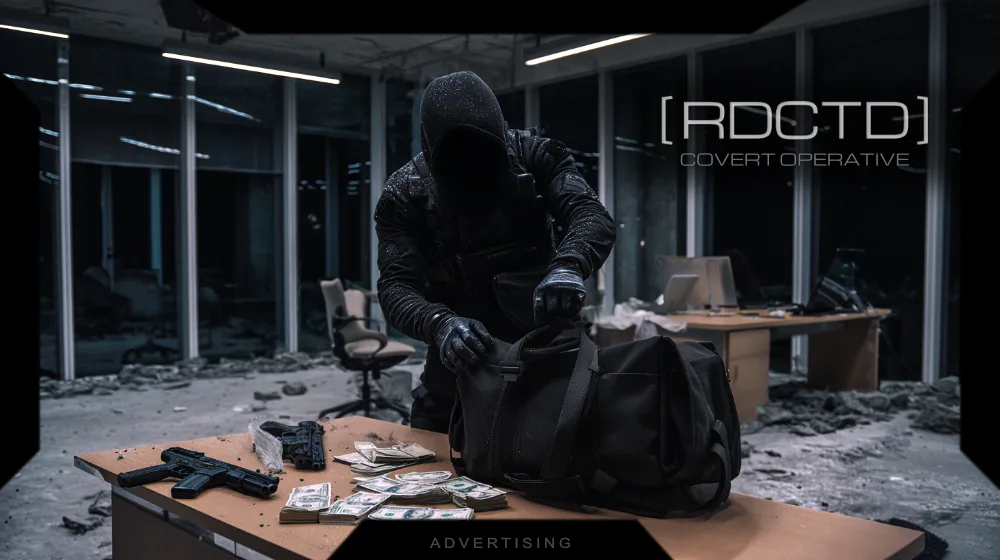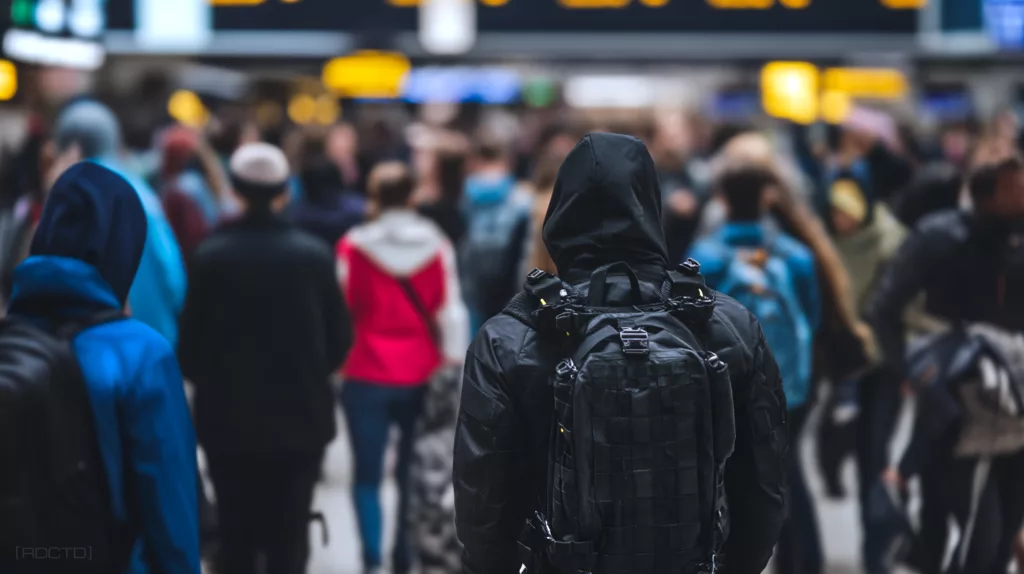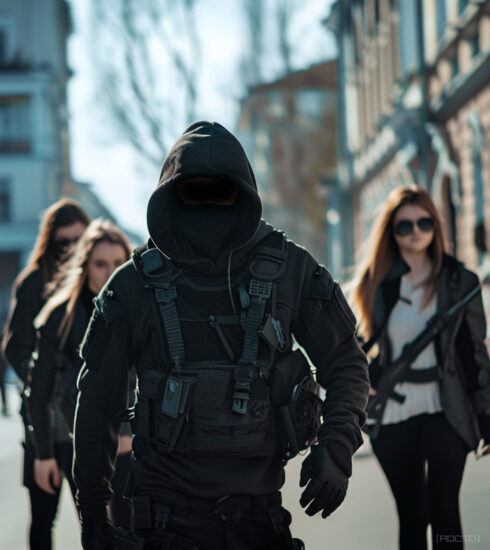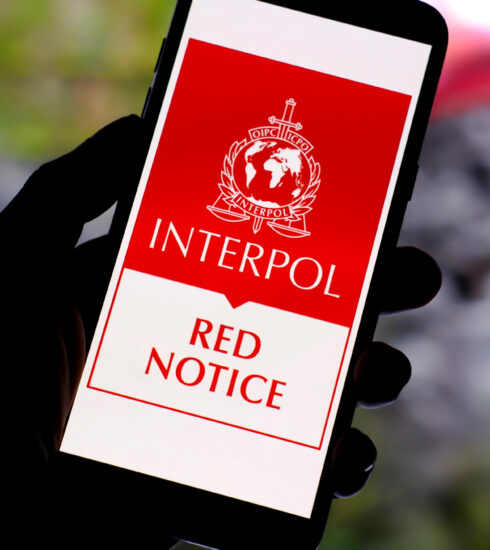21 Tactics to Travel Like a Ghost
This isn’t a tourist guide. These are hard-earned tactics from the field, moves that let you walk through a city like smoke, slip out of surveillance nets, and leave minimal trail.
When you’re operating under the radar; exfiltrating a hostile zone, crossing borders under heat, being safe as a foreigner, or just need to stay two steps ahead of whoever’s watching, you can’t afford to travel like a civilian.
Visibility is vulnerability. Operatives know that real freedom comes from mastering the art of vanishing without making noise. It’s not just about disguises and fake passports; it’s about mindset, discipline, and tradecraft that makes you forgettable.
Blending into the background while moving across borders, cities, or even just neighborhoods is a skill every seasoned operative hones early. Whether you’re slipping past surveillance or just avoiding attention in a crowded city, traveling like a ghost is about mastering discipline, misdirection, and the finer points of tradecraft. This is how to pull it off with less footprints.
Know When to Vanish
Sometimes the best move is to disappear, no warning, no goodbye, just gone. If the atmosphere shifts, people get too curious, or your gut starts whispering something’s off – trust it. Operatives live by instincts sharpened through experience, not second guesses.
Tactic: Establish silent exit triggers; keywords, gestures, or timing cues that tell you it’s time to move. Rehearse them so there’s no hesitation when it matters.
Tactic: Always have a fast exit plan: prepaid rides, a nearby safe spot, or even a quick-change kit stashed offsite. You should be able to vanish in under 60 seconds, no trace left behind.
Disappearing at the right time isn’t fear, it’s survival. A ghost knows that walking away clean beats staying and getting burned.

Use Cash, Always
Cash leaves no trail. Credit cards, even prepaid ones, can link back to you through purchase points or security cameras. Keep a stash in multiple currencies, split it up, and never keep it all in one place.
Tactic: When exchanging currency, avoid airport kiosks and big-name exchange counters, they’re expensive, require passports and have cameras. Find local spots off the main drag, and always check rates ahead of time.
Tactic: Carry a dummy wallet with a small amount of cash and expired cards in case you get hit by a pickpocket or mugger. Your real stash should stay deep, secure, and layered in your clothing or gear.
Cash doesn’t ping databases, doesn’t alert financial institutions, and doesn’t talk when someone’s looking for you. If you’re serious about moving like a ghost, make sure your money’s just as silent.
Ditch Loyalty Programs
Frequent flyer numbers, hotel rewards, and app-based perks track everything; flights, hotels, locations. Every swipe, every point earned, is a breadcrumb back to your identity. The convenience they offer isn’t worth the digital leash they slap on you.
Tactic: Use third-party booking services with no account sign-in required, then clear your browser history and cookies right after. Stick to platforms that accept gift cards or cryptocurrency if you want a deeper layer of anonymity.
Tactic: If you’re forced to provide an email, create a burner tied to your cover ID; no real names, no recovery options linked to your main life. Use that email once, then dump it.
Loyalty programs are designed to track behavior, that’s their whole business model. If you’re trying to ghost your way through a city, the last thing you want is a digital dossier building up behind you.
Rotate Burner Phones
One phone per mission, and always a dumb phone if possible. Smartphones are surveillance magnets; GPS, apps, background data leaks. A true burner gets used once, maybe twice, then smashed or tossed where no one will ever dig it up.
Tactic: Buy your burner and SIM separately, in different locations, and never together with a credit card or near cameras. Keep the purchase casual, act like you’re buying for a kid or an older relative.
Tactic: Power the phone on only in secure, shielded areas or when you’re on the move and away from fixed locations. Leave it off the rest of the time, an active signal gives away more than your words ever could.
Burner phones are throwaways, not lifelines. If you get attached to one, you’re not using it right and you’re risking the whole op.
Blur Your Digital Shadow
A ghost doesn’t leave tracks in the sand, and you sure as hell shouldn’t leave footprints in the cloud. Treat every online session like you’re being watched, because you probably are.
Dress Like the Locals, Not Better
Clothes can make you or break you. Show up over- or underdressed, and you’re marked the second you step out. Operatives don’t just blend in, they disappear by syncing perfectly with the local visual baseline.
Tactic: Study the neighborhood before you set foot there, use street-level views, social media, or local news to check what people wear by season and district. Don’t just copy fashion; copy posture, pace, and attitude.
Tactic: Ditch logos, tactical gear, and anything military-looking. Stick to neutral colors, worn-in shoes, and carry cheap local brands, nobody suspects the guy wearing a common hoodie.
If you look like someone who belongs, you’re invisible. But if you dress like you’re hiding, you’re already exposed.
Vary Your Routes
Repetition is a death sentence. Take the same route twice, and you give observers a pattern to predict, intercept, or exploit. Operatives know mobility isn’t just about movement, it’s about controlled unpredictability.
Tactic: Map out at least three alternate paths to every key location you frequent; hotel, café, safehouse, and rotate them without warning. Mix walking, rideshares, and public transit to stay fluid.
Tactic: Use mirrored windows or reflections in storefronts to spot tails. If someone keeps showing up on different routes, you’re not imagining it, you’re being followed.
A ghost never walks the same street the same way twice. Keep your movement random, and you keep your options alive.
Layer IDs and Covers
Layered IDs aren’t just about faking who you are, they’re about buying time and creating confusion. And in this line of work, time and confusion are priceless.
Learn Local Etiquette
Blending in isn’t just about language, it’s about behavior. Misuse a greeting, eat with the wrong hand, or step into a sacred space with shoes on, and you’ll draw eyes fast. Operatives take the time to understand the rhythm, not just the rules.
Tactic: Watch the locals first; how they queue, how loud they talk, how they signal thanks or disagreement. Mimic their tone, volume, and body language until you pass as one of them without thinking.
Tactic: Learn key phrases, not just to speak, but to respond. A basic local reply delivered naturally can shut down suspicion before it ever starts.
Acting like you belong is half the game. If you move like an outsider, they’ll treat you like one and a ghost can’t afford that.
Use Dead Drops for Communication
Real-time communication is a liability. Calls, texts, and even encrypted chats can be intercepted or traced. Dead drops, prearranged locations to leave or retrieve intel, keep operatives clean, quiet, and hard to track.
Tactic: Choose dead drop sites in high-traffic but low-interest areas. Places people come and go without raising eyebrows, like public parks, transit stations, or busy cafés. Rotate locations frequently to avoid patterns.
Tactic: Use concealment tools; magnetized containers, fake rocks, hollowed-out objects, to keep drops hidden in plain sight. Always check for surveillance before approaching, and never linger.
Dead drops are old-school tradecraft because they work. If you’re passing info face-to-face or over the wire, you’re one mistake away from exposure.

Travel Light and Modular
If you can’t carry it and run, it’s too much. A small, modular setup lets you move fast, shift roles, and disappear when the heat’s on. Operatives don’t haul gear, they carry tools.
Tactic: Pack layers, clothes that can shift your appearance fast. A jacket, glasses, and a hat can change your silhouette in under ten seconds.
Tactic: Use pouches and organizers so everything has a place. When you need to dump or reconfigure your load-out, seconds count, and fumbling gets you caught.
Mobility is freedom. The more you carry, the more you’re tied down and ghosts don’t drag anchors.
Know Your Exits
Every room, building, and street has multiple exits, you better know them all before you sit down. Complacency gets people boxed in. An operative always sits where he can see the door and never stays longer than he has to.
Tactic: On entry, scan for alternate exits; service doors, stairwells, windows, anything not marked “Main.” Mentally map them so you can move instinctively when things go loud.
Tactic: In public places, choose seats with your back to a wall and eyes on the exits. Never post up in blind corners or deep inside a room, those are traps.
Exits aren’t just escape routes, they’re lifelines. If you don’t plan your exit before you enter, you’re already compromised.
Sleep in Mid-Range Spots
A good crash spot doesn’t stand out and doesn’t remember you. If the front desk can’t describe you tomorrow, you picked the right place.
Erase Metadata
Every file you touch (photos, documents, videos) carries hidden data: timestamps, GPS coordinates, device info, and more. Metadata is a digital fingerprint that can tie you to a place, time, or tool. Operatives strip it clean before anything ever leaves their hands.
Tactic: Use tools like ExifTool or MAT2 to scrub metadata from files before sending, uploading, or storing. Don’t rely on built-in “remove info” options, they usually miss key fields.
Tactic: When possible, disable location services and tagging at the device level before capturing anything. Prevention is always cleaner than cleanup.
Clean data is silent data. If a file talks, you better hope it’s not talking about you.
Mirror Local Movement Patterns
How you move says everything. Walk too fast, you look nervous; too slow, you look lost. Operatives study the locals, not just how they dress, but how they flow through space, and they sync with it until they vanish in the crowd.
Tactic: Observe peak times, traffic flow, and crowd behavior. Blend into commuter groups during rush hour or linger casually in off-peak moments depending on the cover you’re running.
Tactic: Match posture, eye contact, and even how people carry bags or use phones. If everyone’s got earbuds in or their hands in pockets, so do you.
Movement is rhythm. When yours matches the environment, you don’t just blend in, you disappear.
Hide in Transit
Transit is risk and opportunity rolled into one. If you move right, it’s the perfect place to ghost out without a trace.
Fake Luggage Tags
Bags are more than just baggage, they’re mobile ID cards if you’re not careful. Airline tags, name cards, even barcode stickers can be used to track your movement or link you to a location. Operatives strip and spoof every piece of luggage they carry.
Tactic: Remove all previous travel tags before every new trip; airport barcodes, hotel labels, anything with dates or destinations. Those little stickers can wreck your cover fast.
Tactic: Use fake name tags with burner info tied to your current cover identity. If the bag gets flagged or separated, it leads to a dead end, not your real life.
Your gear should travel like you, anonymous, untraceable, and forgettable. If your bag talks, it better be speaking someone else’s name.
Speak Simply and Briefly
The more you say, the more you give away; accent, background, stress level, intent. Long conversations invite scrutiny; short, direct responses shut it down. Operatives speak just enough to blend in, never enough to get remembered.
Tactic: Stick to neutral phrases and common responses. Avoid slang unless you’re fluent in the local dialect, using the wrong term in the wrong place is a dead giveaway.
Tactic: If questioned, ask a question back. Flipping the conversation buys time, redirects attention, and keeps control in your hands.
Loose talk gets remembered. A ghost leaves behind silence, not stories.
Use Decoys
Misdirection isn’t just a trick, it’s tradecraft. When done right, the decoy becomes the story, and you become a ghost.
Keep a Neutral Look
Your appearance should be forgettable. Tattoos, flashy clothes, piercings, or anything distinctive make it easy for someone to ID you later. Operatives keep it plain, no flair, no edge, just background noise in human form.
Tactic: Stick to muted colors; gray, navy, black, earth tones, and wear common, local styles. No brand-name gear or anything that might catch a witness’s eye.
Tactic: If you’ve got visible tattoos or scars, cover them or alter your posture and clothing to mask them. Facial hair, glasses, or hats can be added or removed on the fly for a fast appearance shift.
You don’t want to be remembered as “the guy with the skull tattoo” or “the woman with bright red shoes.” A ghost isn’t unique, they’re invisible by design.
Burn Everything on Exit
Once you’re done, wipe the slate, completely. Devices, IDs, hotel receipts, burner accounts, transit cards. Anything that could tie you to a location, a timeline, or a role gets destroyed or ditched. Operatives don’t leave closure, they leave confusion.
Tactic: Physically destroy SIM cards and memory drives; snap them, burn them, or crush them beyond recovery. Deletion isn’t enough; assume everything digital can be pulled back by someone with the right tools.
Tactic: Don’t revisit the same digital spaces or physical locations under a new identity. If a cover’s been used once, it’s contaminated, retire it permanently.
The mission’s over when the trail is cold and the past is dust. If you’ve done it right, no one should even be sure you were ever there.
Staying invisible isn’t just about gear or luck, it’s a mindset. Discipline, awareness, and tight tradecraft keep you ahead of the game.
[INTEL : Situational Awareness as a Traveler]
[OPTICS : Airport, United Kingdom]







